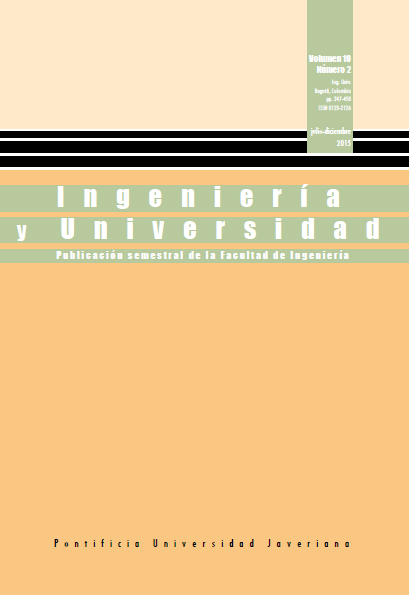References
[1] Project Management Institute (PMI), A guide to the Project Management Body of Knowledge (PMBOK). Pennsylvania, 2013.
[2] R. Delgado, La dirección integrada de proyecto como centro del sistema de control de gestión en el Ministerio del Poder Popular para la Comunicación y la Información, Caracas, Venezuela. La Habana: Centro Nacional de Derecho de Autor (Cenda), 2011.
[3] I. Pérez et al., “Modelo para el aprendizaje automático: aplicación en la Dirección Integrada de Proyectos”, in II Taller Internacional de Ciencias Computacionales e Informáticas, Informática 2013, La Habana, 2013.
[4] D.B. Stang, IT project & portfolio management magic quadrant. Stanford: Gartner, 2013.
[5] P.Y. Piñero, “Un modelo para el aprendizaje y la clasificación automática basado en técnicas de soft-computing”, Tesis doctoral, Dpto. Ciencias de la Computación, Universidad Central “Marta Abreu de Las Villas”, 2005.
[6] R.E. Bello and J.L. Verdegay, “Los conjuntos aproximados en el contexto de la soft computing”, Revista Cubana de Ciencias Informáticas, vol. 4, no. 1-2, pp. 5-24, 2010.
[7] L.A. Zadeh, “Fuzzy logic, neural networks and soft computing”, Fuzzy Logic, Neural Networks and Soft Computing, Communications of the ACM, pp. 77-84, 1994.
[8] A. Kelemen, Y. Liang, and S. Franklin, “A comparative study of different machine learning approaches for decision making”, Recent Advances in Simulation, Computational Methods and Soft Computing, pp. 181-186, 2002.
[9] M. Sugeno, Fuzzy measures and fuzzy integrals: A survey, fuzzy automata and decision processes. New York: Elsevier, 1977.
[10] Mathworks, Matlab, Fuzzy Logic Toolbox, User’s Guide. Massachusetts: The Mathworks, 2014 [online]. Available: http://www.mathworks.com. Accessed on: March 7, 2014.
[11] Heracles, “Modelado dinámico y aprendizaje automático aplicado a la gestión de proyectos software”, Revista de Procesos y Métricas de las Tecnologías de la Información, vol. 1, no. 3, pp. 21-28, 2004.
[12] F. Dweiri and M. Kablan, “Using fuzzy decision making for the evaluation of the project management internal efficiency”, Decision Support Systems, vol. 42, no. 2, pp. 712-726, 2006.
[13] M. Bath, “Project classification using soft computing: ACT”, in Int. Conf. on Advances in Computing, Control & Telecommunication Technologies, 2010, pp. 537-539.
[14] H. Gao, “A fuzzy-ANP approach to project management performance evaluation índices system”, in Int. Conf. on Logistics Systems and Intelligent Management, IEEE, 2010, pp. 273-277.
[15] A. Certa, M. Enea, and A. Giallanza, “A synthetic measure for the assessment of the project performance”, in Business performance measurement and management. Berlin: Springer-Verlag, 2010, pp. 167-180.
[16] A. Gajate, Modelado y control neuro-borroso de sistemas complejos: aplicación a procesos de mecanizado de alto rendimiento. Salamanca: Universidad de Salamanca, 2011.
[17] K.M. Mewada, A. Sinhal, and B. Verma, “Adaptive Neuro-Fuzzy Inference System (ANFIS) based software evaluation”, IJCSI International Journal of Computer Science, vol. 10, no. 1, pp. 244-250, 2013.
[18] Y. Liu et al., “Research on evaluation of project management maturity model based on BP neural network”, Advances in Information Sciences and Service Sciences (AISS), vol. 5, no. 2, pp. 693-701, 2013.
[19] A. Govindarajan, “A novel framework for evaluating the software project management efficiency–an artificial intelligence approach”, TELKOMNIKA Indonesian Journal of Electrical Engineering, vol. 12, no. 9, pp. 7054-7058, 2014.
[20] P.Y. Piñero et al., “GESPRO: paquete para la gestión de proyectos”, Revista Nueva Empresa, vol. 9, no. 1, pp. 45-53, 2013.
[21] Software Engineering Institute (SEI), CMMI® for Development, V. 1.3: Improving processes for developing better products and services. Technical Report. CMU/SEI-2010-TR-033, 2010.
[22] J.A. Lugo et al., “Control de la ejecución de proyectos basado en indicadores y lógica borrosa”, Iberoamerican Journal of Project Management, vol. 4, no. 1, pp. 15-35, 2013.
[23] A. Bermudez et al., “Sistema neuro-borroso de apoyo al control de la ejecución de proyectos”, Revista Cubana de Ingeniería, vol. 5, no. 2, pp. 41-51, 2014.
[24] J. A. Lugo et al., “Control automatizado de proyectos en Cuba: un acercamiento”, in 1ra. Conf. Científica Internacional UCIENCIA 2014, Universidad de las Ciencias Informáticas, La Habana, Cuba, 2014.
[25] T. Takagi and M. Sugeno, “Fuzzy identification of systems and its application to modeling and control”, IEEE Transactions on Systems, Man, and Cybernetics, vol. 15, no. 1, pp. 116-132, 1985.
[26] J.-S.R. Jang, “ANFIS: Adaptive-Network-Based Fuzzy Inference Systems”, IEEE TransactionSystems Man & Cybernetics, vol. 23, no. 1, pp. 665-685, 1993.


